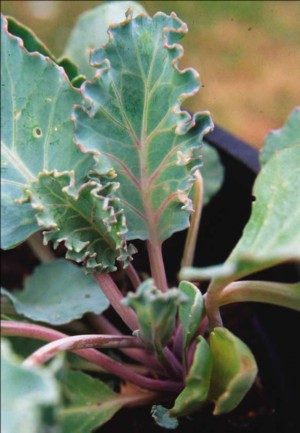The reprinting of Daniel Bunce’s 1838 The Manual of Practical Gardening provides old, but golden rules, for all gardeners.

Today, everything old is new again thanks to Daniel Bunce, the first curator of the Geelong Botanic Gardens in 1857, and the Friends of Geelong Botanic Gardens, who have published a facsimile edition of his month-by-month planting guide containing a fascinating array of fruits, vegetables and ornamentals grown in that bygone era, along with instructions on how to catch rats, prepare plants to send to the “homeland” and other useful information! With renewed interest in growing fresh produce at home and in restaurant vegie patches, the opportunity to discover a range of unusual edibles not available commercially is as simple as delving into Bunce’s book — much of the horticultural information is still relevant today — then sourcing the seed to plant in your garden.
A nutty-tasting red celery with its distinctive burgundy-hued stalks was commonplace 170 years ago and is a versatile and flavoursome rediscovery that puts a whole new spin on soup, casserole and salad offerings.
Sea kale, also known as sea coleworts or sea cabbage, boasts ornamental sculptural silvery-grey foliage. This attractive perennial dies back in winter but if you blanch the new spring shoots to exclude light and air by covering them with a flower pot or mound them with mulch, similarly to witlof, will provide an unusual offering for the table. When the shoots are 20–30cm long, snap them off near ground level and prepare them as you would asparagus — steamed and served with melted butter or drizzled with a little hazelnut oil, a squeeze of lime juice and a grind of black pepper.
Likewise, cardoons, which are somewhat similar to globe artichokes and have been championed by Clarissa Dickson Wright of Two Fat Ladies fame, make a useful and architectural addition to the edible garden. After removing the tough outer ribs, the stalks can be boiled, steamed or baked. [There are some great recipes in Vegetables from an Italian Garden, Phaidon, reviewed last issue.]
Salsify, also known as oyster plant as its flavour is reminiscent of oysters, produces 20cm fleshy white roots that can be baked, boiled, fried, creamed into soups or added to stews. It can often be seen growing in the wild, identifiable by its distinctive mauve flower heads and buds, while black-skinned scorzonera, also referred to as black salsify and used similarly, produces yellow flowers and has a more delicate flavour. To prevent discolouration and retain the whiteness when boiling these vegetables, acidulate the cooking water with a little vinegar or lemon juice.
When it comes to the “sweetest, whitest and most pleasant of roots”, though, it’s skirret that takes the honours. This hardy perennial native to China and Japan is a member of the carrot and parsley family. Dating back centuries, it was enjoyed widely in Europe in the 15th century but over the years gradually fell out of favour.
The fleshy, tuberous, sweet white roots that form in prongs from a crown do best in cooler areas and can be propagated from seed. Skirret grows to around 60cm–1m and should be lifted as required during winter — it’s said the roots are sweeter after the first frosts.
With a taste hinting of parsnip, carrot and parsley, skirret can be simply scrubbed before cooking and used similarly to salsify or scorzonera — boiled, in a stew, baked, braised or creamed with mashed potato. It can also be added to soups and curries or even be grated raw into salads and served simply with a vinaigrette dressing. The root can also be roasted as a coffee substitute and is said to cleanse the bladder and treat jaundice and other liver disorders.
The Manual of Practical Gardening by Daniel Bunce is available for $27.95 (plus p/h) from the Friends of Geelong Botanic Gardens, phone (03) 5222 6053. Red celery seed, sea kale, salsify and scorzonera are available from Phoenix Seeds in Snug Tasmania, phone (03) 6267 9663 phoenixseeds@ozemail.com. au; cardoons from Diggers Seeds, phone (03) 5984 7900 www.diggers.com.au ; and skirret plants from Island Herbs Snug Tasmania, phone (03) 6267 9218, email islandherbs@bigpond.com






